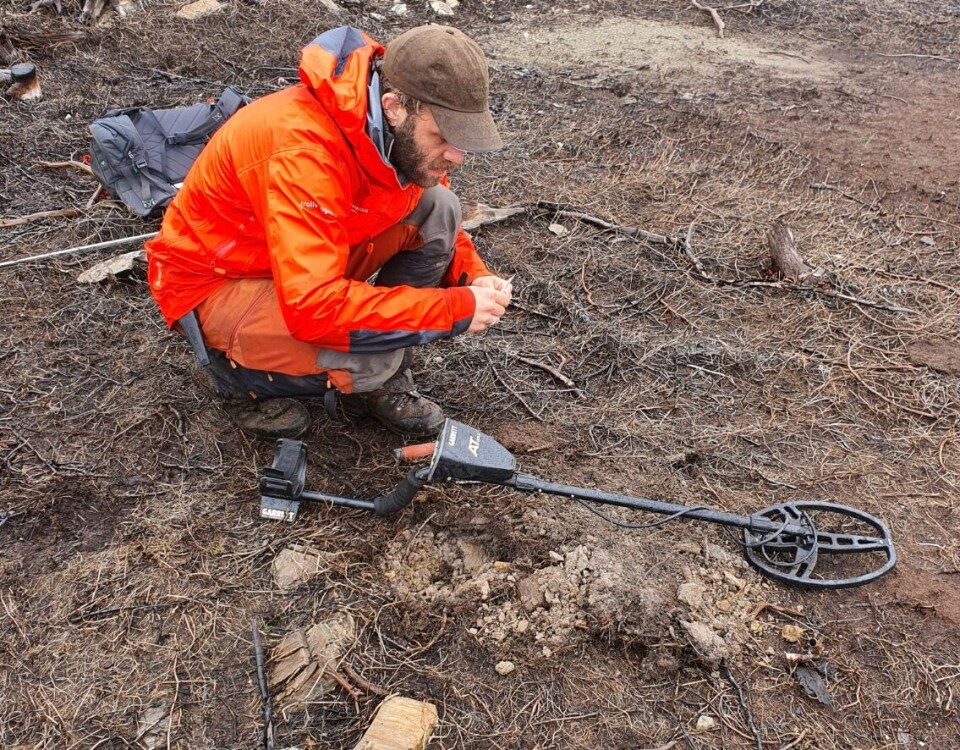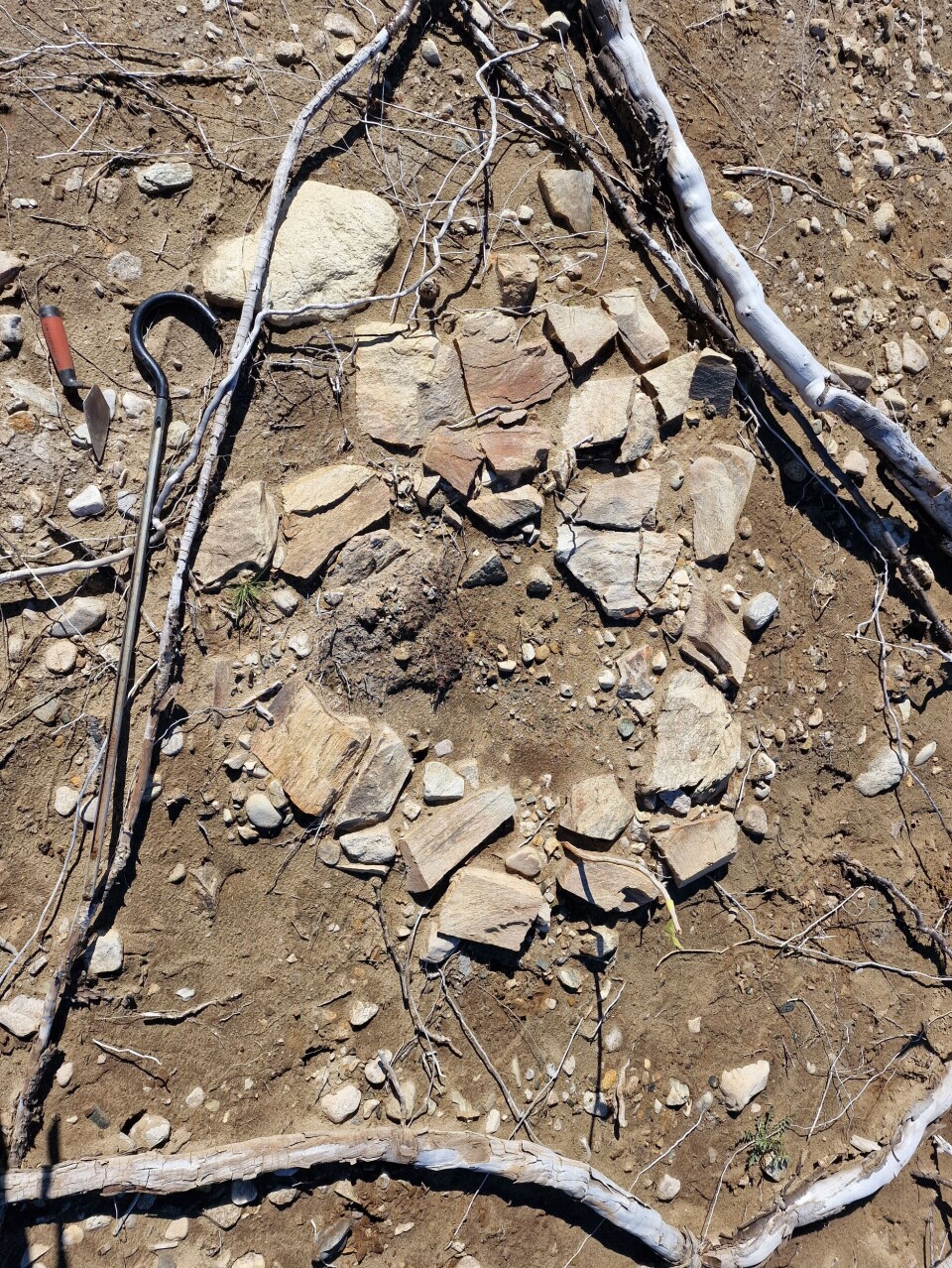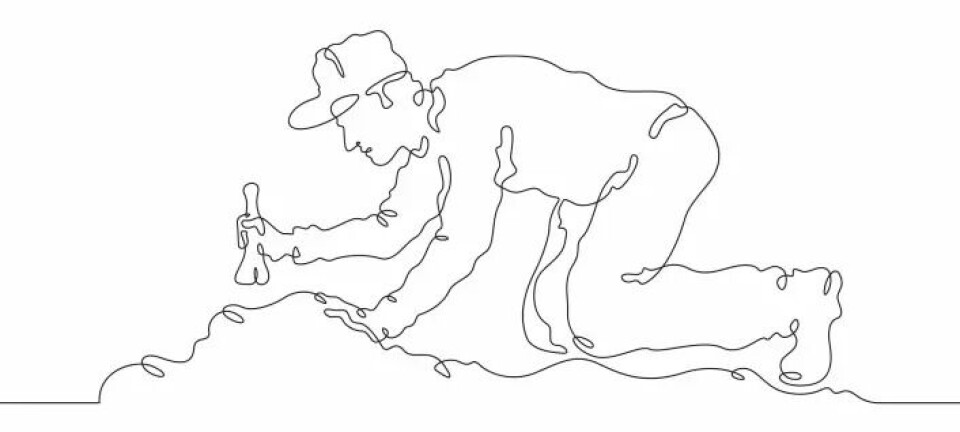
Archaeologists' most exciting finds:
Found traces of Sámi settlement in the Viking Age
It has been difficult to prove that there were Sámi in central Norway at the start of the Viking Age. But then Harald Bugge Midthjell and his colleagues made a discovery.
When archaeologist Harald Bugge Midthjell heard that the artificial lake Nesjøen in Trøndelag county, central Norway, was to be drained of water, the plan was already clear.
He had a desire to find Sámi cultural relics.
“When Nesjøen was filled up in the 70s, no significant archaeological surveys were done there. So it was an excellent opportunity to access the lake bed and map out how much was actually there,” he says.
Previously, it has been difficult to prove that there was a Sámi population in Trøndelag at the start of the Viking Age. What they found changed this.
Sámi fire pits
In the area around Nesjøen, Midthjell and his colleagues uncovered several Sámi fire pits.
“The fire pits could be dated back to the Viking Age and the 8th century. This is a period when it was not known that there was any significant Sámi settlement in Trøndelag. It’s actually quite significant. It means a lot for the understanding of the Iron Age and the Viking Age in Norway,” says Midthjell.
For most people, the fire pit may look ordinary, but for the archaeologists, this was a clear sign of Sámi presence.
“Sámi fire pits are often built in a distinctive manner, recognisable from traditional settlements of a certain size, and built up with surrounding stones, indicating permanent settlements rather than temporary campsites,” he says.
New landscape
The area where the archaeologists were searching had been submerged for several decades. This made the work different from what Midthjell had experienced before.
“It’s rare for all vegetation to be removed. Usually, you’re walking through dense undergrowth, trying to spot variations in the thickness of the grass, and maybe one or two stones sticking out of the turf, which is terribly difficult,” he says.
It is still a significant task.
“The job largely involves sorting out what is significant from what is just debris,” he says.
History in a new light
Midthjell hopes the discovery will change the way we view Viking history.


“The old Viking society was likely more diverse than we have thought. This feels like the most important contribution of my career so far. I’ve found gold, Viking ships, and such before, but the small charcoal bits from the fire pits are more important than all of that,” he says.
This discovery makes it clear that the Sámi have a place in the narrative.
“It means a lot, especially for the Sámi population, who now have a much stronger basis to argue for their right and their place in central Norway,” he says.
A desire for new discoveries
Midthjell’s work is not over, and he hopes to find more that can contribute to our understanding of Sámi history.
“I’ve certainly got a taste for it now. I’m trying to map out more areas and conduct more carbon dating to expand our understanding,” he says.
With new findings, they can connect older discoveries and perhaps learn more about where the Sámi have lived.
“Who knows where it’ll stop. We’ve only scratched the surface,” he says.
———
Translated by Alette Bjordal Gjellesvik
Read the Norwegian version of this article on forskning.no






































